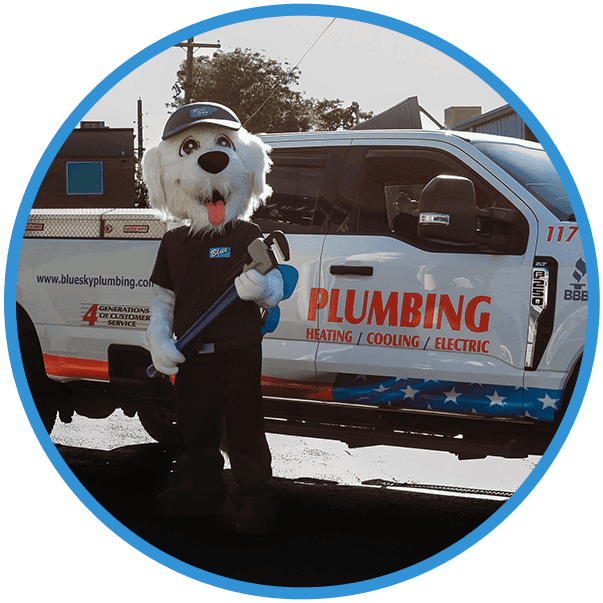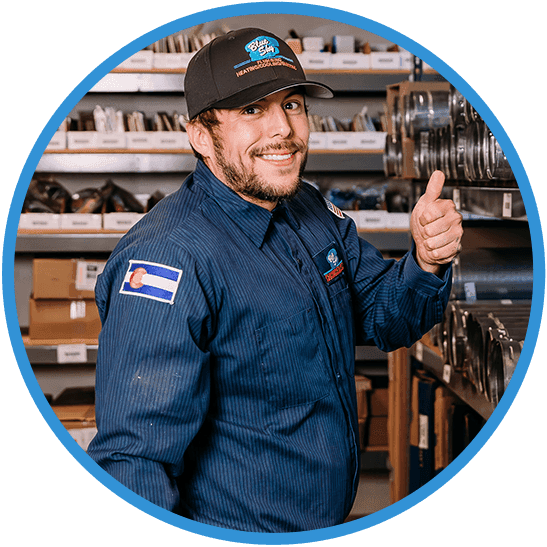

Duct Insulation & Duct Repairs
Your air ducts are one of the most important systems in your home, and if the ducts are poorly sealed or insulated they are likely contributing to higher energy bills. Learn more about ducts below, courtesy of Denver’s favorite heating repair company, Blue Sky!
Your home’s duct system is a branching network of tubes in the walls, floors, and ceilings; it carries the air from your home’s furnace and central air conditioner to each room. Ducts are made of sheet metal, fiberglass, or other materials.
Ducts that leak heated air into unheated spaces can add hundreds of dollars a year to your heating and cooling bills. Insulating ducts in unconditioned spaces is usually very cost-effective. If you are installing a new duct system, make sure it comes with insulation.
Duct Sealing
Sealing your ducts to prevent leaks is even more important if the ducts are located in an unconditioned area such as an attic or vented crawlspace. If the supply ducts are leaking, heated or cooled air can be forced out of unsealed joints and lost. In addition, unconditioned air can be drawn into return ducts through unsealed joints.
Although minor duct repairs are easy to make, qualified professionals should seal and insulate ducts in unconditioned spaces to ensure the use of appropriate sealing materials.
Minor Duct Repair Tips
Check your ducts for air leaks. First, look for sections that should be joined but have separated and then look for obvious holes.
Duct mastic is the preferred material for sealing ductwork seams and joints. It is more durable than any available tape and generally easier for a do-it-yourself installation. Its only drawback is that it will not bridge gaps over ¼ inch. Such gaps must be first bridged with web-type drywall tape or a good quality heat approved tape.
If you use tape to seal your ducts, avoid cloth-backed, rubber adhesive duct tape — it tends to fail quickly. Instead, use mastic, butyl tape, foil tape, or other heat-approved tapes. Look for tape with the Underwriters Laboratories (UL) logo.
Remember that insulating ducts in the basement will make the basement colder. If both the ducts and the basement walls are not insulated, consider insulating both. Water pipes and drains in unconditioned spaces could freeze and burst if the heat ducts are fully insulated be-cause there would be no heat source to prevent the space from freezing in cold weather. However, using an electric heating tape wrap on the pipes can prevent this. Check with a professional contractor.
Top Tips for Successful Duct Insulation or Repairs
- Hire a professional to install both supply and return registers in the basement rooms after converting your basement to a living area.
- Be sure a well-sealed vapor barrier exists on the outside of the insulation on cooling ducts to prevent moisture condensation.
- If you have a fuel-burning furnace, stove, or other appliance or an attached garage, install a carbon monoxide (CO) monitor to alert you to harmful CO levels.
- Be sure to get professional help when doing ductwork. A qualified professional should always perform changes and repairs to a duct system.
Install a Carbon Monoxide Detector
Carbon monoxide (CO) detectors are required in new buildings in many states. They are highly recommended in homes with fuel-burning appliances such as natural gas furnaces, stoves, ovens, water heaters, and space heaters. An alarm signals if CO reaches potentially dangerous levels.
Book online with our team today!

Check Out What Your Neighbors Are Saying!
4.8 Stars | 19+ Google Reviews


-
"Thank you Blue Sky!!!"
I highly recommend Blue Sky Plumbing for their professionalism and overall service from initial contact through completion and especially Eric for his superb service and professional, friendly attitude.
- Rhonda S. -
"I really can't praise Blue Sky enough."
Daniel Downing arrived on time and did an excellent job. He completed the plumbing tasks expertly and gave me valuable advice on how to proceed with future projects. He thoroughly explained the work he did and how to maintain the systems he worked on.
- Greg M. -
"This experience was the very best ever!"
Chris absolutely takes professionalism and friendliness to the top level of excellence. He took the time to explain to me exactly what needed to be done, and what wasn’t needed to be done and answered all of my questions.
- Sarah K. -
"He was outstanding."
Mario De La Cruz came today to service our hot water heating system here in Evergreen. We found him to be very pleasant, professional, and knowledgeable.
- Joyce N.

-
 4.8 Stars | 3,000+ Google Reviews
4.8 Stars | 3,000+ Google Reviews -
 BBB A+ Rating
BBB A+ Rating -
 360+ Recommendations
360+ Recommendations


